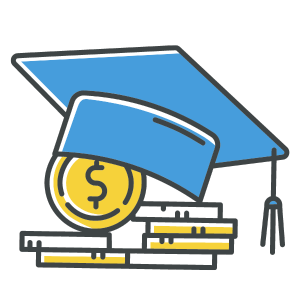|
!NEW! REPAYMENT PLAN THAT OFFERS LOWER MONTHLY LOAN PAYMENTS

The Biden Administration has recently launched the most affordable repayment plan ever, the new SAVE (Savings on a Valuable Education) Plan. The SAVE Plan can significantly decrease your monthly payment amount compared to all other income-driven repayment (IDR) plans. Like other IDR plans, the SAVE Plan calculates a borrower’s monthly payment amount based on their income and family size.
SAVE Plan Benefits
- Borrowers will only owe payments on income over 225% of the federal poverty guidelines.
- This means single borrowers earning $32,800 or less, and families of four earning $67,500 or less, will not owe any loan payments.
- Borrowers earning more than these amounts will save at least $1,000 per year compared to the current income-driven repayment plans.
- Borrowers who make their monthly payments, even if that payment is $0, won’t see their loan balance grow due to unpaid interest.
- Lastly, The SAVE Plan excludes spousal income for borrowers who are married and file separately. There is no longer need for a spouse to cosign the borrowers’ IDR application.
And by July 2024, additional benefits of the plan will go into effect, including:
- Payments from undergraduate loans will be cut in half, from 10% to 5% of borrowers’ incomes above 225% of the poverty guidelines.
- Borrowers with original principal balances of $12,000 or less will receive forgiveness of any remaining balance after making 10 years of payments.
How to Apply for the SAVE Plan
The SAVE Plan is replacing the existing REPAYE (Revised Pay As You Earn) Plan. Borrowers already on the REPAYE Plan will automatically be transferred over to the new SAVE Plan and do not need to reapply or request to change their plan. To check if you are already on the REPAYE Plan, log in to StudentAid.gov, go to your My Aid page, scroll down, and view your loans. Each loan will list a repayment plan. If you see that you are enrolled in the REPAYE Plan, you do not need to take any action.
If you are not already enrolled in the REPAYE Plan, you need to apply to get the benefits of the SAVE Plan. Click this link to apply for the SAVE Plan.
FOR MORE INFORMATION REGARDING THE SAVE PLAN, CLICK HERE
|